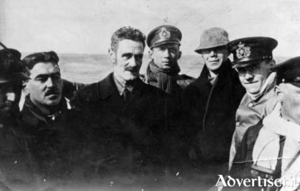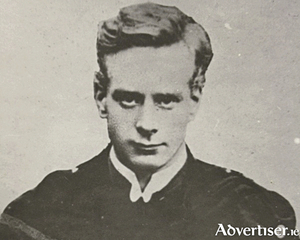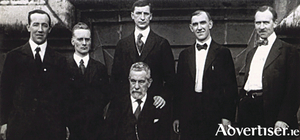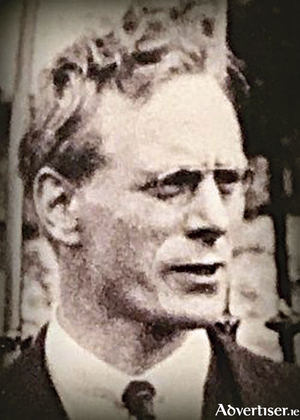Search Results for 'John Devoy'
16 results found.
Ireland could have been a world war battlefield

In the early hours of Friday April 21 1916, two days before the Easter Rising was scheduled to begin, a German submarine surfaced off the Kerry coast, and three men set out for the shore in a small dinghy. On board were Sir Roger Casement, and two other men Robert Monteith and Daniel Bailey. As they neared the shore the dinghy capsized, and the men arrived on Banna Strand in Tralee Bay, drenched and exhausted.
John Devoy's epic solo journey

JOHN DEVOY, author of the acclaimed 'alternative' travel book, Quondam: Travels In A Once World, will be in Charlie Byrne's Bookshop to sign copies of the book on Friday November 8.
Liam Mellows - tragic hero of 1916

On December 7 1922, Pádraic Ó Máille TD and his friend Sean Hales TD of Cork, walked out of a hotel on Ormonde Quay, by Dublin’s river Liffy. They just had lunch, and were on their way back to the Dáil in Leinster House, a short drive away. Ó Máille, Galway city and Connemara’s first TD, had been appointed Leas Ceann Comhairle (deputy speaker). As they reached their car a gunman stepped forward and opened fire. Both men were hit, but Hales was bleeding profusely. Although seriously injured Ó Máille managed to get Hales into the car and drove to the nearest hospital, where he collapsed, and died.
‘Shouting and cheering’ welcomes de Valera ‘home’.

After an initial welcome to New York, where Mellows was feted as a hero of the Rising, it all went sour. Despite warnings from the influential Clan na Gael to tone his rhetoric down, Mellows continued his war against Britain. He was kicked out of Clan na Gael by its leaders, the veteran Fenian John Devoy, and the ambitious Judge Cohalan, when he publicly campaigned against Irish Americans joining the army, to fight with Britain and her allies on the battlefields of France at the climax of World War I. This totally opposed the efforts of Clan na Gael not to isolate itself from mainstream American politics.
Mellows became destitute in New York

After the collapse of the Galway Rising, Easter 1916, its leader Liam Mellows managed to get to New York where he was embraced by the the influential American Fenian network, Clan na Gael, who regarded him as ‘the most capable man who had so far arrived in America’.
‘Laughter and fun never deserted them’.
Early on Easter Monday morning, April 24 1916, the Galway Volunteers sprang into action. It was a chaotic beginning to the rebellion which hoped to see a nation-wide rising of fully armed and committed men and women seizing control of the country. We know, however, the capture of the ship Aud, with its weapons, explosives and ammunition, off the Kerry coast on Good Friday, prompted the Dublin leadership to cancel the Rising. The order was ignored by Padraic Pearse and others, who had the benefit of arms imported into Howth two years previously. They took over key positions throughout Dublin city, which they held for six days.
‘Laughter and fun never deserted them’.
Early on Easter Monday morning, April 24 1916, the Galway Volunteers sprang into action. It was a chaotic beginning to the rebellion which hoped to see a nation-wide rising of fully armed and committed men and women seizing control of the country. We know, however, the capture of the ship Aud, with its weapons, explosives and ammunition, off the Kerry coast on Good Friday, prompted the Dublin leadership to cancel the Rising. The order was ignored by Padraic Pearse and others, who had the benefit of arms imported into Howth two years previously. They took over key positions throughout Dublin city, which they held for six days.
Liam Mellows - ‘I have failed lamentably’

Unlike the men executed after the 1916 Rising, there was little of the same idealisation given to the hundreds of men and women who died in the War of Independence, or, more emphatically, those executed during the regretable Civil War.
‘The most malignant man in Irish history’

After the enthusiastic reception at New York’s Waldorf Astoria Hotel on June 23 1919, Eamon de Valera was deluged with invitations. For the next 18 months he kept the cause of Ireland before the American public. Criss-crossing the country he addressed public meetings, and state legislatures, receiving on the way a plethora of honorary doctorates, including being adopted as a chief of the Indian Chippewa nation. He quickly won the goodwill of William Randolph Hearst and his chain of newspapers. He was given maximum publicity wherever he appeared, which proved to be an effective answer to British propaganda.

